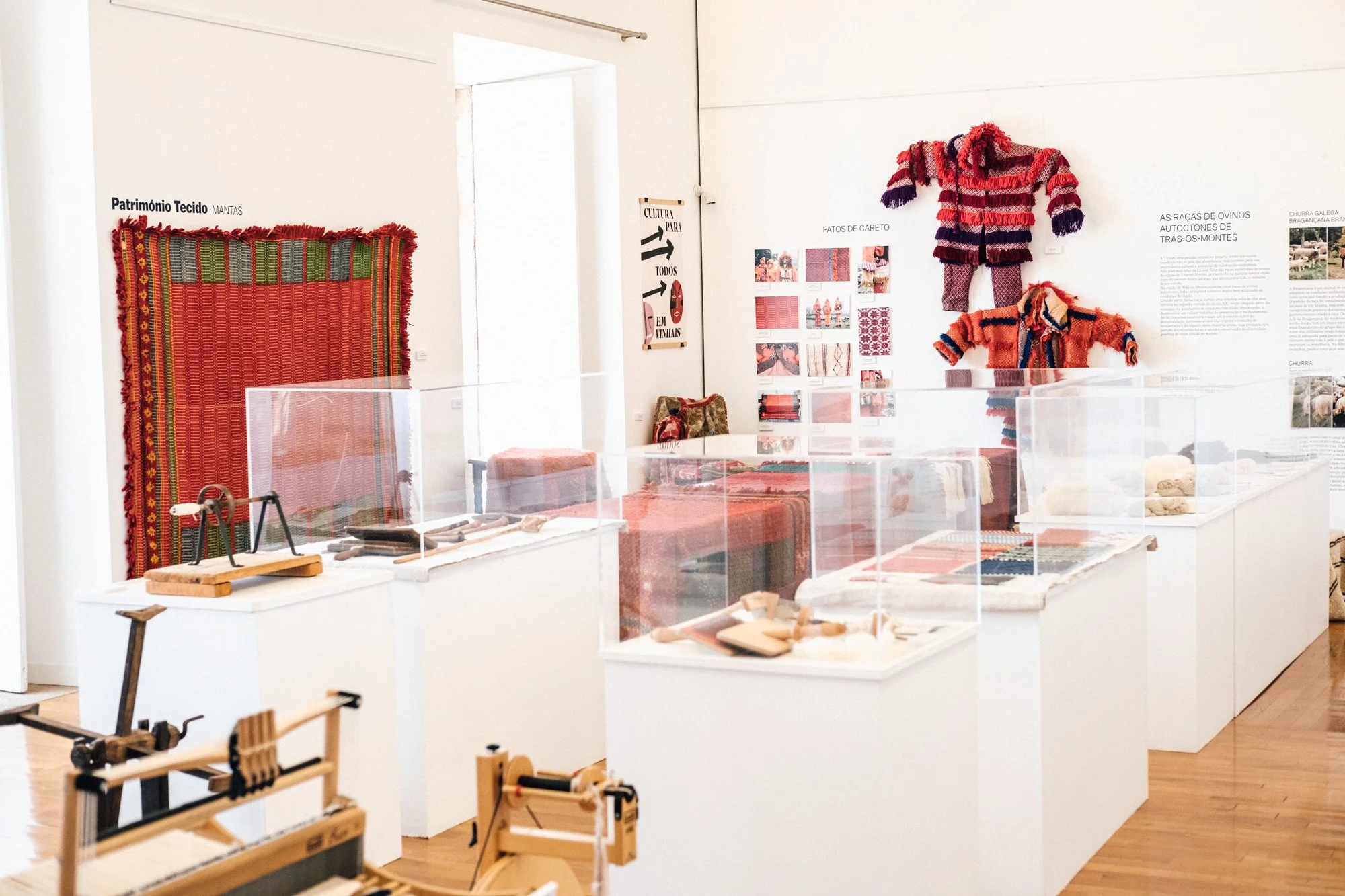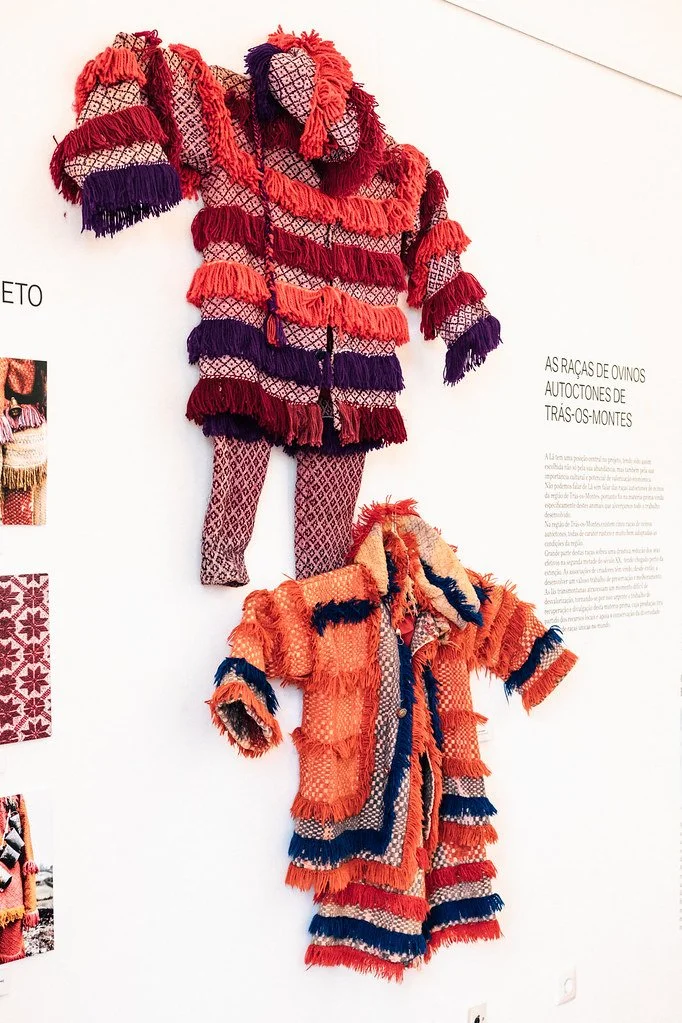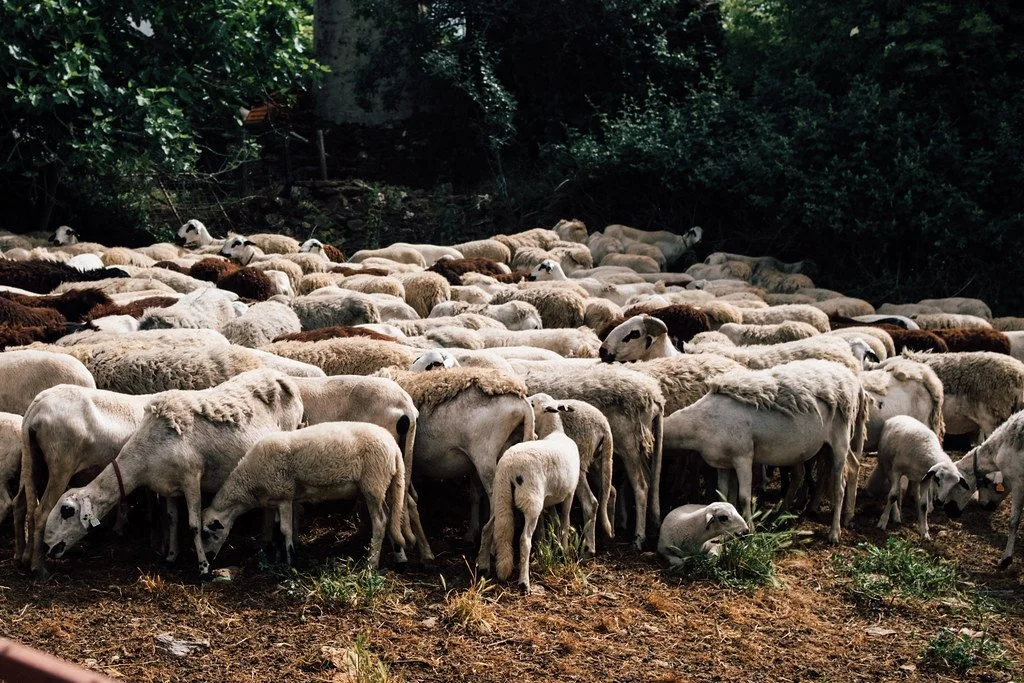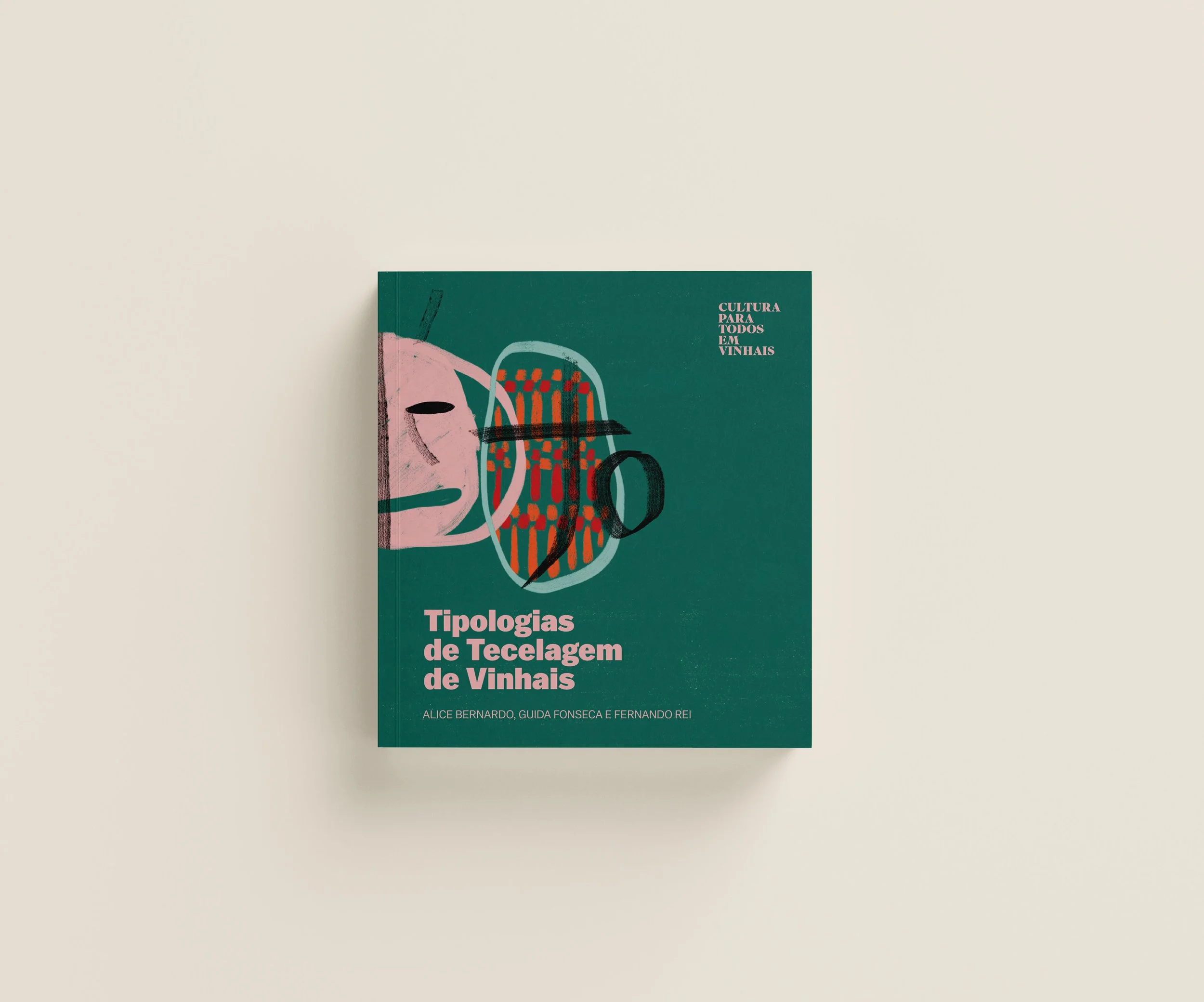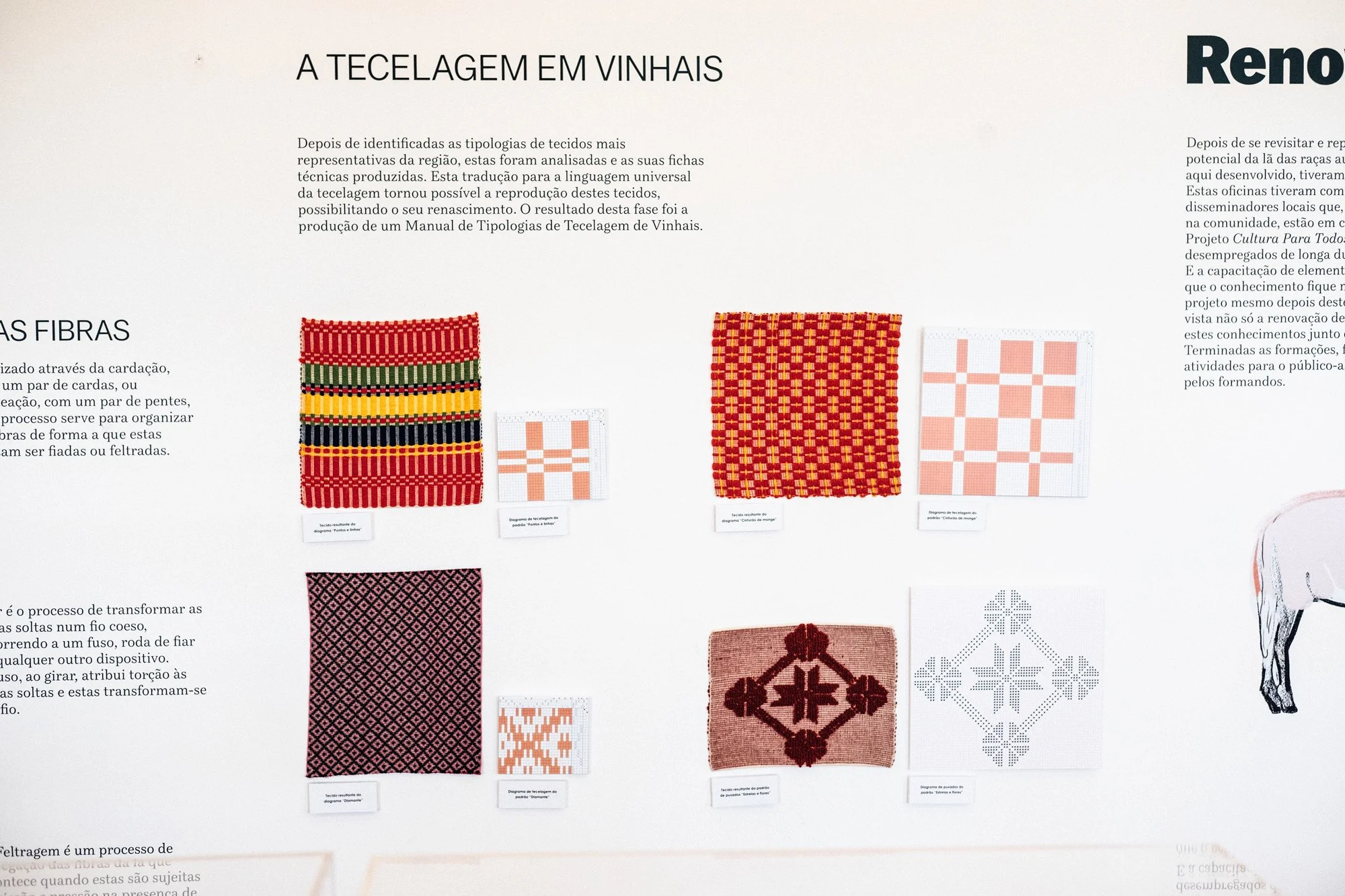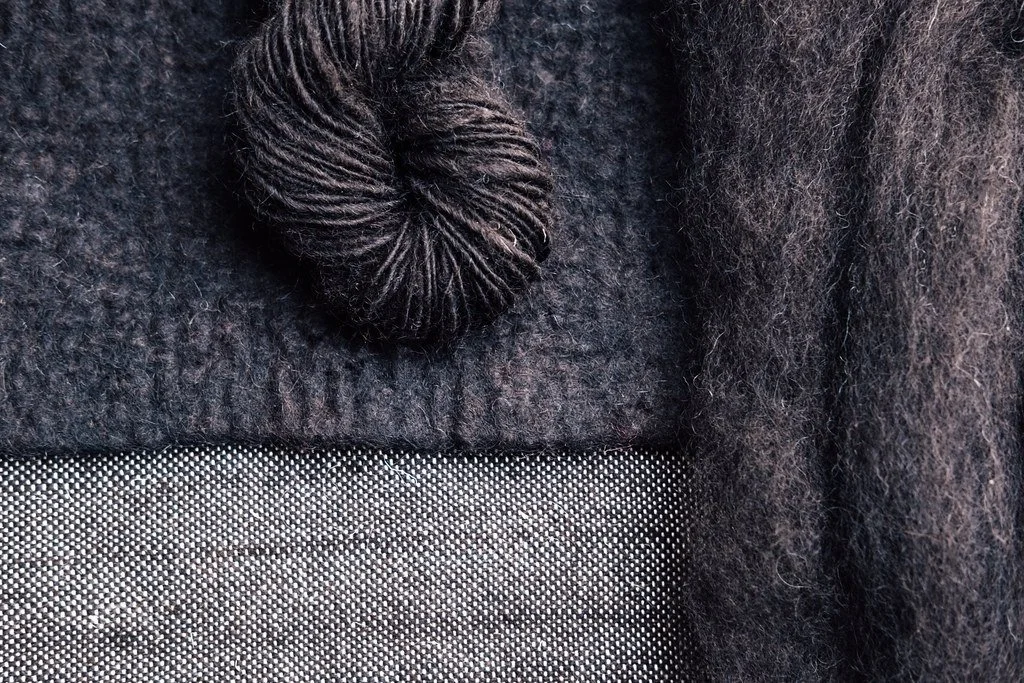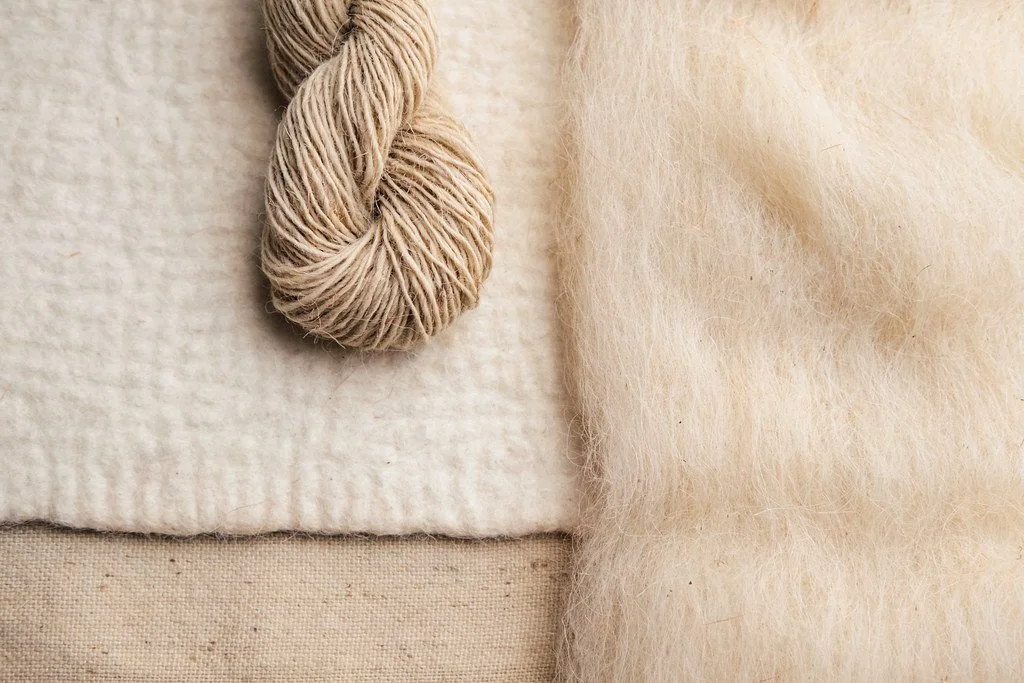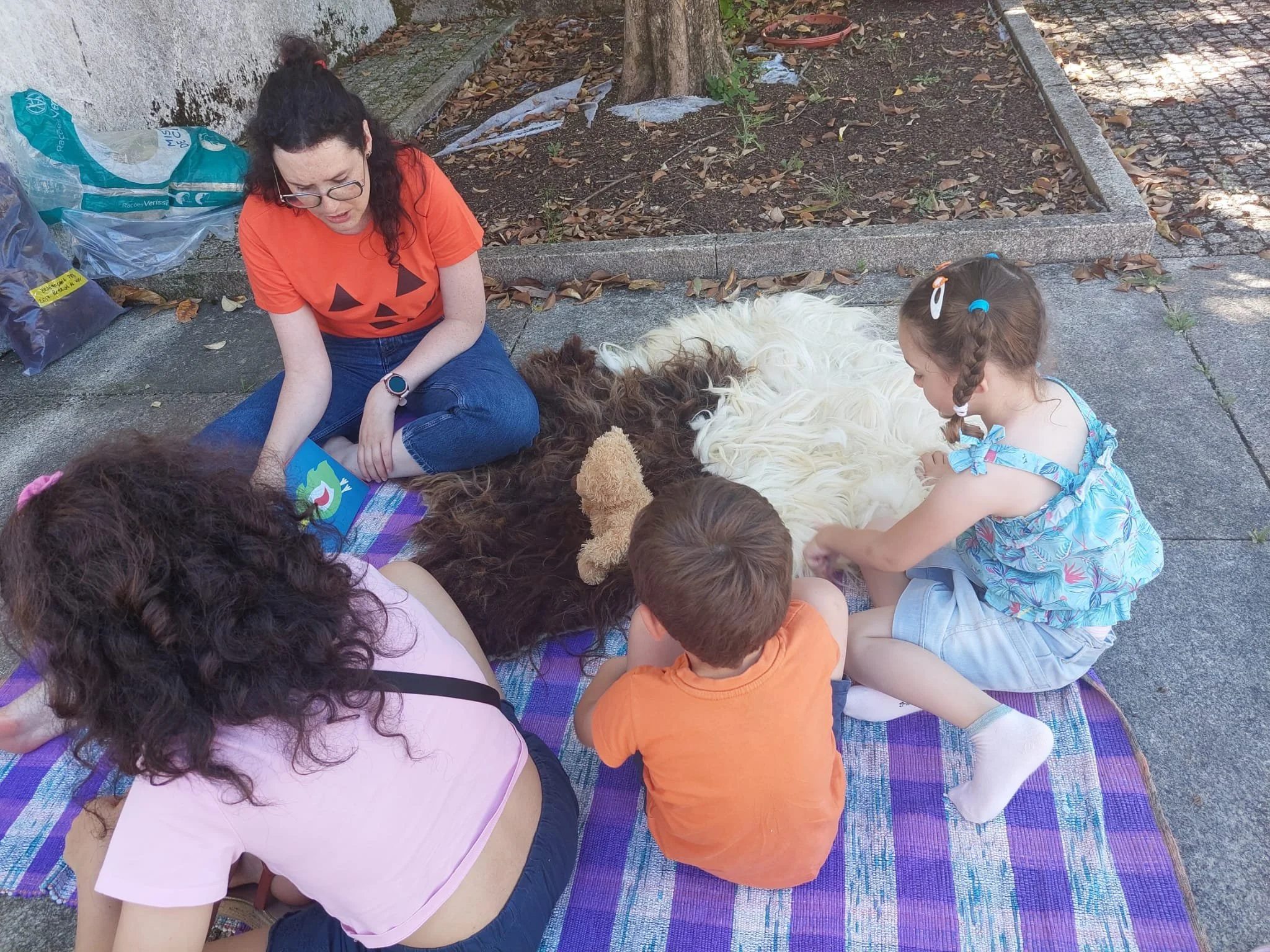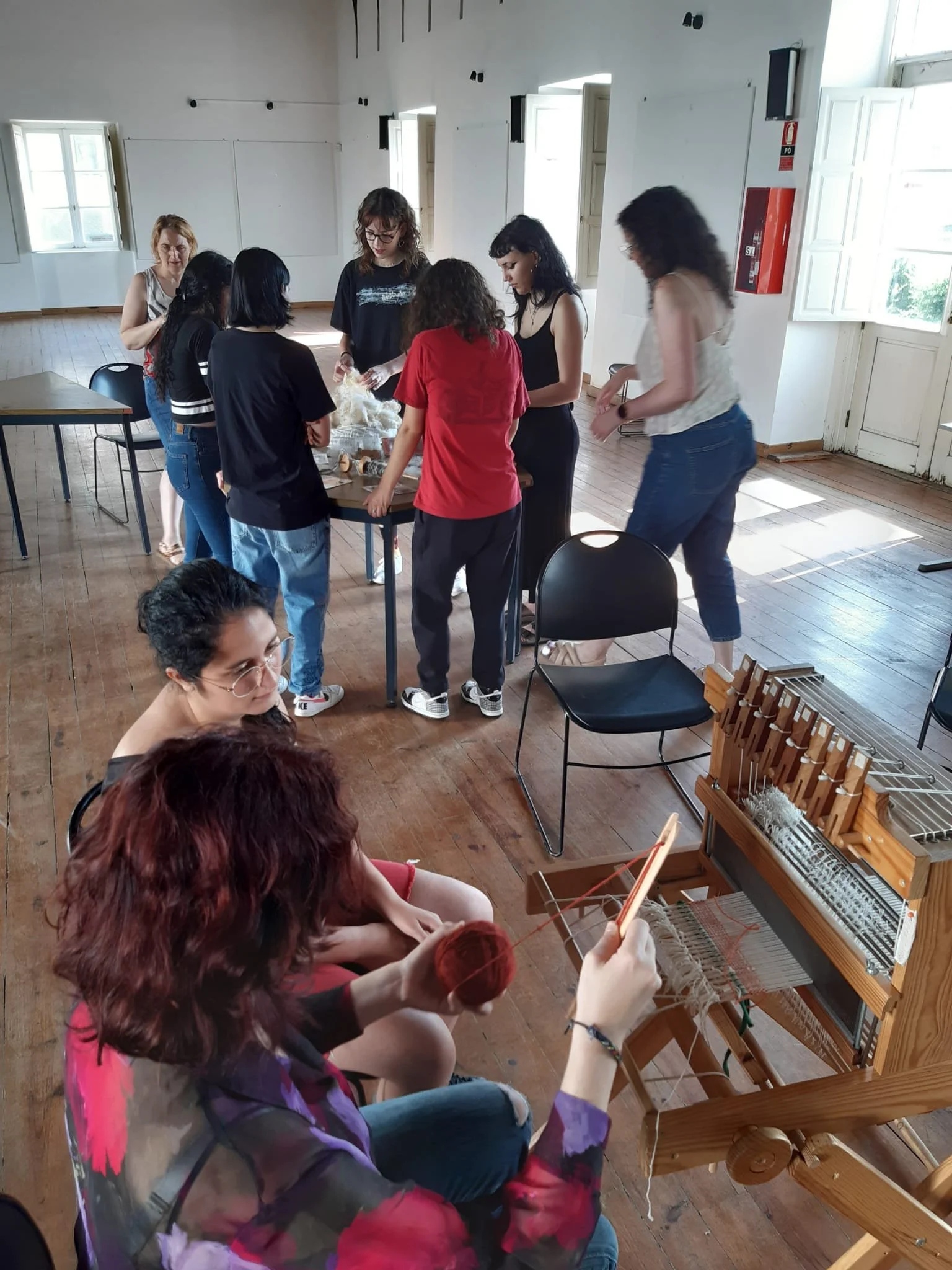The Same But Different: Revisiting, Rethinking and Renewing the Wool Crafts in Vinhais
Our intervention in the project “Culture for All” in Vinhais ended with an exhibition at the Vinhais Cultural Center, which we inaugurated last August and which tells the story of the work we've done over almost two years.
In this project, we didn't come to introduce radical changes, but rather to understand how something that is seen as traditional in the region and is now dying out locally needs to be changed so that it can exist and develop again.
It's a different approach to the subject, focusing on the renewal of knowledge and technology, as opposed to preservation stories.
It's the same, but different.
The project, like this exhibition, is divided into three stages: Revisiting, an exhaustive collection was made of the woven heritage and wool trades in Vinhais and their actors, who, in addition to their heritage importance and role in collective memory, are fundamental to the production of the careto suits.
Rethinking, analyzing, reproducing and rethinking production processes with a focus on passing on technical knowledge to a new generation of artisans.
Renew, where, through practical workshops and the development of support materials, key members of the local communities were trained to be the real agents for disseminating this valuable technical knowledge, the transmission of which can thus be perpetuated beyond this project.
Revisiting
During the first few days of the project, we went around villages, opened trunks and listened to stories about the woven heritage of Vinhais and the craftswomen who, over the years, have woven blankets and clothes like the ones you can find in this room.
Many of the blankets woven in Vinhais were sacrificed to make careto suits, which are now in great demand. The decline of weaving in Vinhais and the consequent lack of woven garments contrasts with the increase in demand for suits, for which there is no longer any raw material.
Although the tools have been in storage for many years, wool and its crafts are still present in the community's memory.
We also wanted to recognize the importance of this memory and ensure that the renewal of these crafts is not a departure from the past, but rather a desire to continue and evolve after a long interregnum.
White Churra Galega Bragançana
Wool plays a central role in the project, having been chosen not only for its abundance, but also for its cultural importance and potential for economic development.
We can't talk about wool without talking about the native breeds of sheep in the Trás-os-Montes region, so it was on the raw material coming specifically from these animals that we based all our work.
In the Trás-os-Montes region there are five indigenous breeds of sheep, all of which are rustic in character and very well adapted to the region's conditions.
Most of these breeds suffered a drastic reduction in numbers in the second half of the 20th century, with some coming close to extinction. Since then, breeders' associations have been carrying out valuable preservation and improvement work.
Wool from Trás-os-Montes is going through a difficult period of devaluation, making it urgent to recover and publicize this raw material, the production of which takes advantage of local resources and supports the conservation of the genetic diversity of breeds that are unique in the world.
Churra Galega Mirandesa
Churra Badana
Black Churra Galega Bragançana
Rethinking
New fabrics produced from the survey and technical drawings of the weaving typologies of Vinhais
After collecting the woven heritage of Vinhais, we analyzed and reflected on the valuable material that came into our hands and how it was produced.
The result of this reflection is reproduced here, through which we rethink production processes and create ways of communicating knowledge, thus enabling future reproduction by a new generation.
Once the most representative types of fabric in the region had been identified, they were analyzed and their technical sheets were produced. This translation into the universal language of weaving made it possible to reproduce these fabrics, enabling their revival. The result of this phase was the production of a Manual of Vinhais Weaving Typologies.
Types of weaving in Vinhais in the exhibition “The Same But Different: Revisiting, Rethinking and Renewing the Wool Crafts in Vinhais”
Samples of processed wool from the 5 indigenous breeds of Trás-os-Montes
Despite the well-known cultural importance of wool in the region, we are currently experiencing a period of ignorance about the characteristics of this local raw material, as well as the processes for processing it productively on a small scale.
At this stage, samples of wool were produced from the 5 indigenous sheep breeds of Trás-os-Montes, in order to showcase their characteristics and thus raise their potential.
Processed samples of the Churra Galega Bragançana breed
Processed samples of the Churra da Terra Quente breed
Specifically for this project, we also produced a Wool Work manual, designed to serve as a teaching aid for the trainees after the training, so that they can use it as a reference for information in their future activities with the community.
Renewing
After revisiting and rethinking the woven heritage of Vinhais and the potential of wool from indigenous breeds, and based on the work carried out here, the practical and creative workshops took place.
The aim of these workshops was to train local disseminators who, by virtue of their roles in the community, are in direct contact with the “Culture for All” project's target audience: children and young people, the elderly and the long-term unemployed.
It is the training of key members of the local community that allows the knowledge to stay in the region, guaranteeing the impact of the project even after it has ended. The trainings were aimed not only at renewing knowledge, but also at disseminating this knowledge to the new local generations.
Exhibition “The Same But Different: Revisiting, Rethinking and Renewing the Wool Crafts in Vinhais”
Work produced by the trainees in the Weaving course, which explored the traditional types of weaving in Vinhais.
Once the training sessions were over, a wide range of activities were designed and developed for the project's target audience, guided independently by the trainees.




